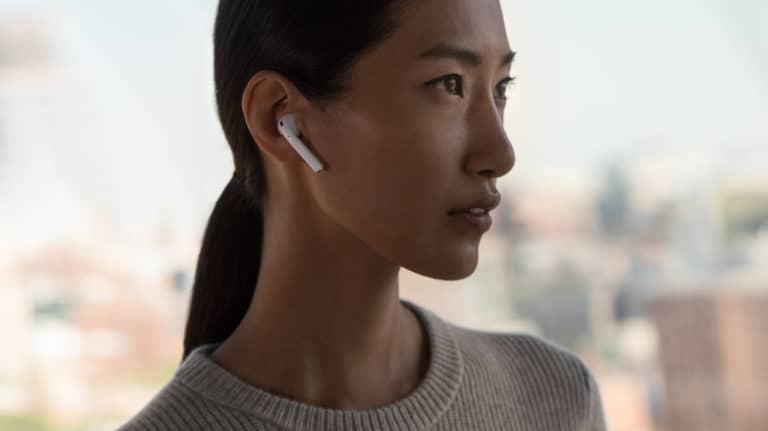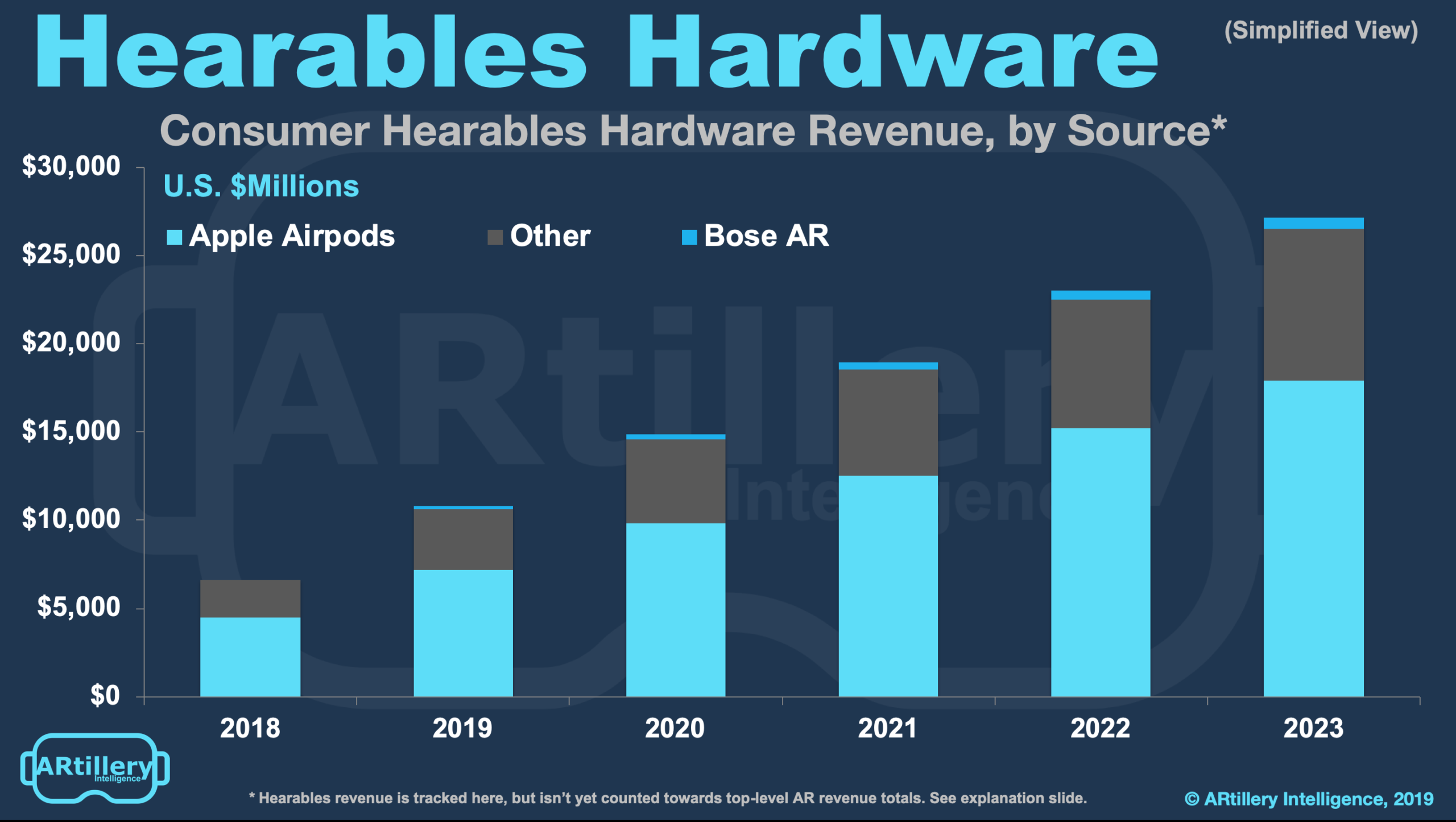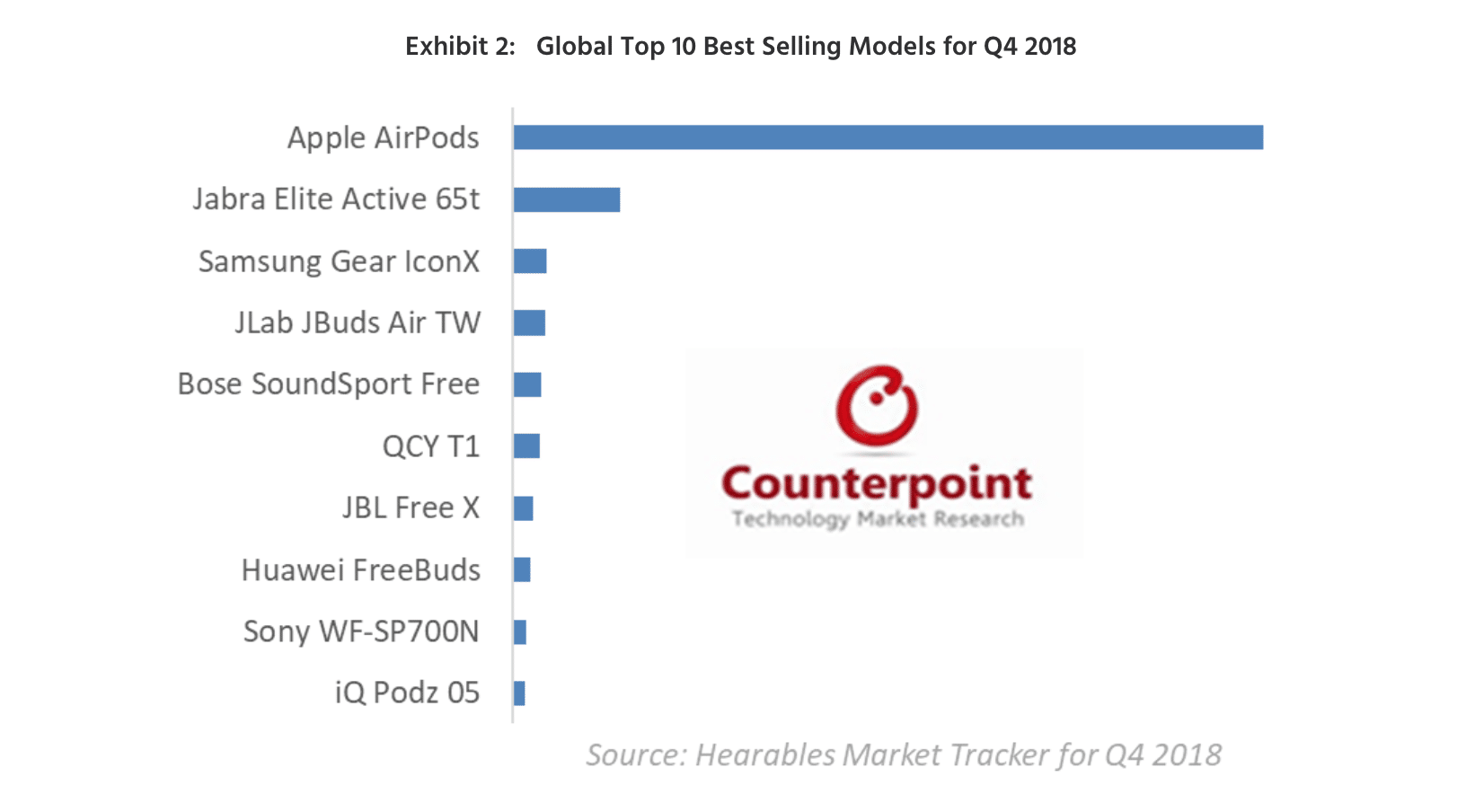
Data Point of the Week is AR Insider’s dive into the latest spatial computing figures. It includes data points, along with narrative insights and takeaways. For an indexed collection of data and reports, subscribe to ARtillery Pro.
One wild card in the world of augmented reality is hearables. Rather than line-of-sight graphics to augment your reality, subtle audio whispers guide you through your day. Advantages include a format that’s easy to absorb while multi-tasking; and avoiding AR glasses’ style crimes.
That last part is key, as devices like Airpods have proven that consumers will indeed walk around most of the day with hardware hanging out of their ears. That’s the first step towards a wearables future. The next step is software and apps that layer in textured content (more on that in a bit).

To quantify momentum in the hearables hardware base, IDC projects them to reach 72 million global annual sales by the end of the year, and 105.3 million by 2023. This is up from its March estimate of 54 million, showing a clear uptick in the firm’s confidence around hearables.
Apple has a pretty definitive market share lead so far. Counterpoint Research separately estimates 35 million AirPods sold last year. Its survey data also indicate that Apple is the consumer favorite, and it’s previous estimates peg Apple’s hearable market share at 60 percent.
Backing all of this, our research arm ARtillery Intelligence estimated in its recent AR forecast that hearables hardware revenue will grow to $27.1 billion by 2023 (see below)* And like the above estimates, Apple will hold a market share lead with $17.9 billion of that 2023 total.

Apple’s lead has a lot to do with the style and lifestyle sell of Airpods, not to mention the superior “it just works” functionality Apple enjoys from vertical integration with iPhones (easier pairing, etc.). That same advantage will play out with Apple’s audio AR ambitions and ARkit integration.
As we wrote last week, Apple’s rumored AR glasses shouldn’t be viewed as a standalone play but a broader move towards a wearables suite that offers holistic sensory augmentation. It’s also classic Apple playbook for a multi-device sell that’s motivated by better cross-device functionality.

Speaking of Apple, Airpods’ hardware blitz is the first step towards a true hearables future as mentioned above, including intelligent/textured audio content. Think of it like the iPhone 1 in 2007 before the App Store. Bose is already there, given the Bose AR developer platform.
The wave of apps that follows will include everything from guided navigation and local discovery to gaming and meditation. An early glimpse can be seen in the development on the Bose AR platform so far, which we recently profiled. There will be a lot more development to watch.
For deeper XR data and intelligence, join ARtillery PRO and subscribe to the free AR Insider Weekly newsletter.
Disclosure: AR Insider has no financial stake in the companies mentioned in this post, nor received payment for its production. Disclosure and ethics policy can be seen here.
Header Image Credit: Apple.
